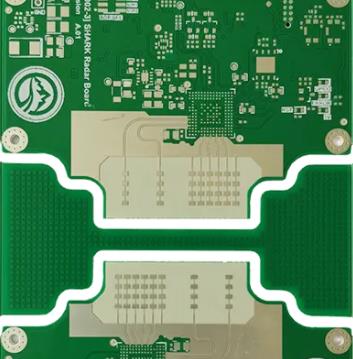No matter in any industry, PCB board can feel their existence in almost all applications. Network and communication applications are no exception. These boards facilitate communication, which is an easy task. In these applications, printed circuit boards can be made of different materials. The structure and design of printed circuit board depend on its application. Similarly, for network and communication applications, different materials can be used for PCB.
PCB material selection is the first step in PCB design process. It is very important to choose the right material for your design, because it will affect the overall performance of the circuit board. There are many factors to consider before choosing to start. Ensure that the material properties meet your specific board requirements and final application. One of the main problems we face when manufacturing PCB is that designers often rely excessively on material data sheets. The data sheet provides the designer with a comprehensive description of the electrical properties of the material. However, when considering various manufacturing problems in the real world, the data table is insufficient, and the manufacturing problems in the real world are important because they will affect the output and cost.

370HR : 370HR is basically prepreg and laminate for PCB board. PCB board made of 370HR meets ROHS requirements. The most common problem in PCB is conductive anode wire (CAF), which is an electrochemical corrosion process. In this phenomenon, the copper metal at the anode dissolves and moves to the cathode. This creates an electrical short circuit, which is detrimental to any application, especially networks and communications. However, the 370HR PCB is CAF resistant. In addition, they have high-density interconnects and excellent thermal reliability. 370HR laminated materials and prepregs designed by Polyclad are made of patented high-performance 180 ° C Tg FR-4 multi-functional epoxy resin system, which is specially designed for multi-layer printed circuit board (PCB) applications requiring maximum thermal performance and reliability. We produce 370HR laminated materials and prepregs, which are made of high-quality alkali free glass fiber fabrics and have excellent conductive anode wire (CAF) resistance. 370HR has excellent thermal properties, low coefficient of thermal expansion (CTE), and mechanical, chemical and moisture resistance properties equal to or exceed those of traditional FR-4 materials. 370HRis used in thousands of PCB designs and has proven to be the best in class in terms of thermal reliability, CAF performance, ease of processing, and performance of sequential laminate design.
Glass epoxy FR4: Glass epoxy FR4 material has excellent strength to weight ratio. In addition, this material is a general-purpose high pressure thermosetting laminate. This makes it suitable for network and communication applications. Under any conditions (dry or wet), the epoxy glass FR4 PCB can maintain electrical insulation and excellent mechanical properties. In addition, the material has excellent mechanical strength and is known for its near zero water absorption.
High speed Pyralux TK: High speed Pyralux TK materials are mainly used in high-frequency PCB board applications. Traditional knowledge refers to Teflon Kapton. The copper clad adhesive layer and the laminate are usually double-sided. The bonding layer used in the material helps to protect it from harsh environments and provides good electrical insulation. Fluoropolymers and polyimides are used to make primary composites. TK material is specially designed for flexible digital circuit board. More advantages of this material include low moisture absorption, better flexibility and low dielectric constant.
Polyimide: This is another material, most commonly used in network and communication PCB. The main advantage of this material is its excellent thermal stability. This allows the material to withstand very high heat in some applications. Known polyimide PCB provide a good basis for surface mounting. In addition, it is a cost-effective material choice for PCB.
Coefficient of thermal expansion (CTE): the expansion rate of PCB material when heated. CTE is expressed in parts per million (ppm) of expansion per degree centigrade of heating. SI unit: PPM/° C. When the temperature of the material rises above Tg, CTE will also rise. The CTE of the substrate is usually much higher than that of copper, which will cause interconnection problems when PCB is heated. The CTE of the X and Y axes is generally low - about 10 to 20 ppm per degree Celsius. This is usually attributed to the braided glass that constrains the material in the X and Y directions. Even if the temperature of the material rises above Tg, CTE will not change much. So the material must expand in the Z direction. CTE along Z-axis should be as low as possible; The target is less than 70 ppm per degree Celsius, which will increase as the material exceeds Tg.
Dielectric constant (Dk) or relative permeability (Er): the ratio of the dielectric constant of the material to the dielectric constant of the free space (i.e. vacuum). It is also called relative permeability. The data sheet applies to a specific (usually 50%) percentage of resin content in the material. The actual percentage of resin in the core or prepreg varies depending on the composition, so Dk varies. The percentage of copper and the thickness of the extruded prepreg will ultimately determine the medium height. The Er of most PCB materials used is in the range of 2.5 and 4.5. Materials with high Er values are also used in specific microwave applications. It usually decreases with increasing frequency.
In the field of communication network equipment, the development trend of high-speed systems puts forward higher requirements for the electrical properties of PCB materials. At the same time, in order to improve the price competitiveness of electronic products, more factors must be considered in material cost control. How to select materials that meet both electrical performance and price competitiveness has become the common concern of PCB board designers in the field of communication networks.